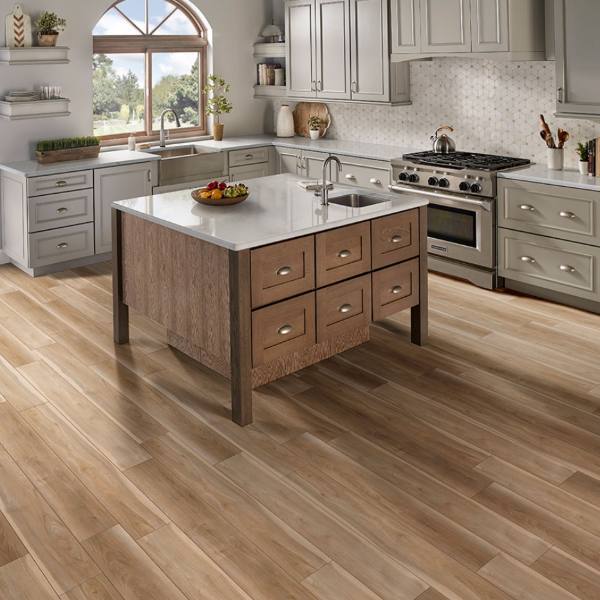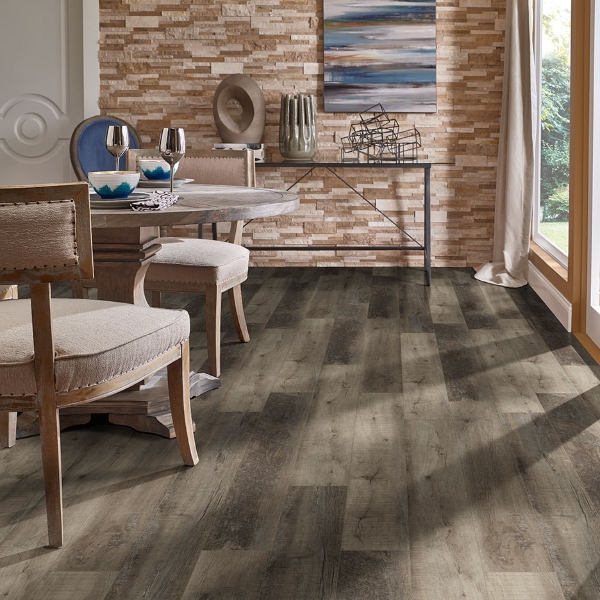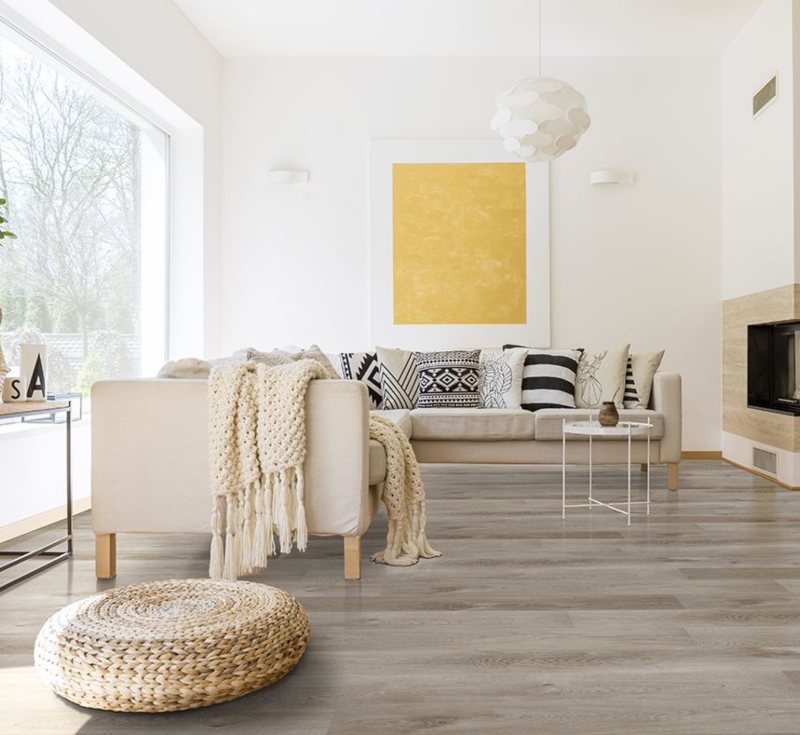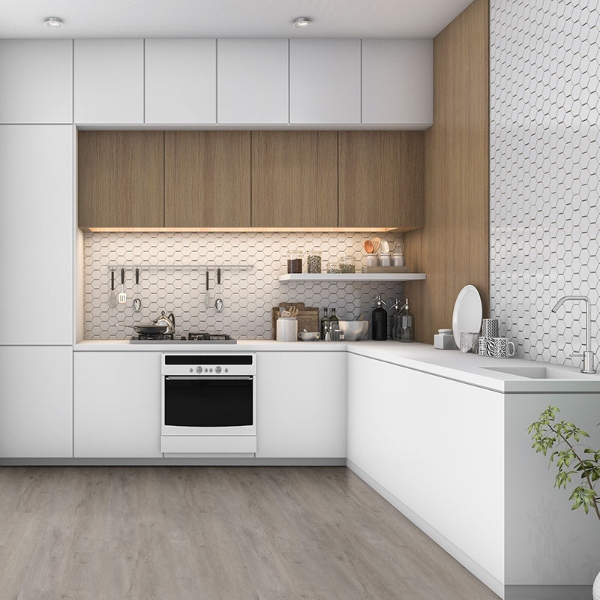The History Of Luxury Vinyl Flooring
January 12, 2021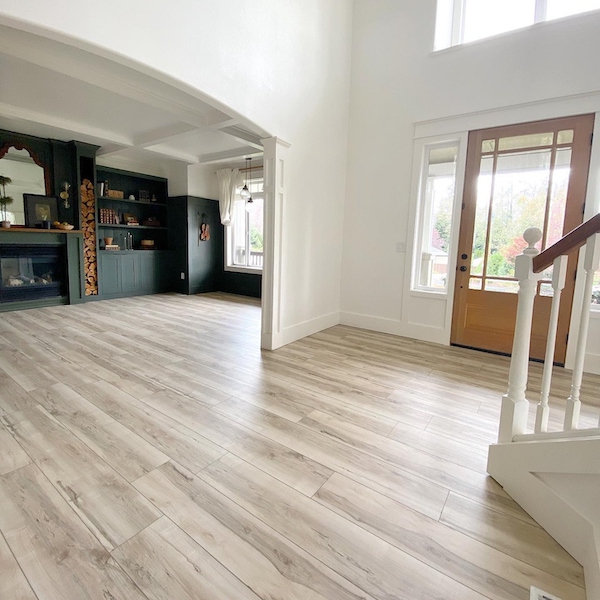
Some inventions like potato chips, penicillin, and the microwave were a product of an accident or mistake that yielded a different yet successful outcome. Surprisingly, the history of luxury vinyl flooring resulted in a similar story of happenstance.
Originally, vinyl, had no clear use or practical application when European researchers created a rigid material with vinyl chloride gas back in the 1800s. Fast forward to its popularity in the 1960s and its updated look and technology today, and you’ll be impressed by the realism of the current LVP flooring materials.
Join us on this journey of discovering how luxury vinyl flooring became such a durable, practical, and affordable material and one of the go-to flooring options of the 21st century.
The First Invention of Polyvinyl Chloride
One of the first resilient floors invented was linoleum in 1845, and over the next century, inventors were creating other flooring styles that included vinyl.
In 1872, German chemist Eugen Baumann was one of the first scientists to synthesize polyvinyl chloride (PVC). With other failed attempts by Russian and German chemists to use PVC commercially, it wasn’t until 1926 that a scientist named Waldo Semon from the B.F. Goodrich Company attempted to create an adhesive and instead discovered how to plasticize polyvinyl chloride, a rubber-like vinyl.
The more flexible and easily processed material would soon be used commercially, with vinyl later transforming into flooring tiles in the 1930s. After WWII, vinyl flooring became a popular choice and replaced other materials like linoleum and asphalt tiles.
The First Debut of Vinyl Flooring
In 1933, vinyl flooring made its glorious debut at the A Century of Progress International Exposition, a world fair that celebrated technological innovation from 1833 to 1933. The world fair, which was held in the city of Chicago, Ill., was so successful that it continued again in 1934. Nearly 50 million visitors could have seen the latest in vinyl composite tiles, which attracted plenty of interest from visitors for its resilient, flame-resistant, and budget-friendly features.
Even though the event was held during the Great Depression, the fair embodied the hope of a future driven by science and technology. However, materials needed for warlike petroleum were in short supply and left the production for high-tech vinyl high and dry. In fact, vinyl flooring was already not widely available and became a rare commodity until after WWII ended.
Post-war, a real estate boom during the 1950s helped boost the sales of vinyl. With thousands of military personnel returning back to their families and moving on with their lives, literally, by buying houses, the need for building materials dramatically increased. Now with the ability for production to move forward, vinyl became the top choice for homes, schools, businesses, and even hospitals, and the efforts to improve the product also grew.
The 1960s Popularity of Vinyl
Affordable and durable vinyl continued to be a popular flooring pick in the ‘60s, with the product contributing to the idyllic looks of Mid-Century Modern style. And with more patterns available, homeowners could choose from groovy designs like floral prints to bold checkered patterns to parquet wood, and sheet vinyl and vinyl tiles even mimicked ceramic mosaics, Spanish tiles, Roman tiles, and much more.
With improvements in design also came advancements in features, including the “no-wax” finish as well as a cushioned vinyl for added comfort. Needless to say, vinyl became a fierce competitor for the carpet industry as it was installed in more and more homes, businesses, schools, and hospitals as it was in the 1950s.
The 1970s Debut of Vinyl Planks
During the early 1970s, home décor trends warranted earth tones and wood tones as a result of the ever-popular American Colonial Revival. With the demand for wood floors, the latest form of vinyl was born: vinyl plank flooring that somewhat resembled hardwood.
Since real hardwood was too expensive for most homeowners and also posed other issues like warping, staining, shrinking, and cracking in wet or dry climates, vinyl planks were the perfect alternative. These wood-look plank tiles could be used in moisture-prone areas like bathrooms and basements. Over the next decade, design improvements included beveled edges for a more realistic look.
The New Features of Today’s LVP
Today’s line of luxury vinyl flooring has come a long way since its impressive introduction in the 1930s. Even though it’s been widely used in the home for nearly 50 years, the glue-down and click-float vinyl comes in colors, patterns, textures, and finishes like no other decade has seen before. Using photorealistic 3-D graphics, tile and plank designs imitate real stone and hardwood and come in a wide range of styles to meet the needs of traditional to farmhouse to modern design aesthetics.
Not just water-resistant, LVF is waterproof, which makes it easier to care for and install a wood-look floor in any room or level. The durable wearlayer helps protect against spills, splashes, scratches, scuffs, and dents, and it typically includes a slip-resistant coating that’s crucial for wet areas. It also makes for an excellent pet-friendly and kid-friendly flooring option and is easy to keep clean with regular sweeping and damp mopping.
Some newer features include reducing the static electricity inside the home. The eco-friendly flooring also doesn’t release harmful VOCs to keep indoor air quality healthy. Even with all of these luxury vinyl flooring benefits added over time, it’s still an economical choice for residential and commercial applications, with the price per square foot rivaling that of less durable flooring materials.
The Consistency of LVP
There’s no doubt that luxury vinyl flooring has skyrocketed to fame in recent years, but really, it’s been a consistent choice for homeowners and business owners alike for many decades. The versatile product offers a wide range of beautiful styles, patterns, and sizes, and its simple vinyl flooring care and maintenance, waterproof features, and easy installation methods make it a desirable choice. Plus, the high-tech luxury vinyl versions allow consumers to upgrade their spaces for an affordable price.
MORE ON LUXURY VINYL FLOORING
How To Install Luxury Vinyl Planks Over Hardwood Floors
How To Get Professional Results Installing Luxury Vinyl Flooring
Luxury Vinyl Flooring for High Traffic — Yes, You Can!
Luxury Vinyl Flooring: Love At First Sight
LVP Flooring provides upscale looks in a low-maintenance package for homeowners of all incomes. Learn more about the benefits of Luxury Vinyl Flooring. And check out these vinyl flooring videos to learn more about LVP flooring styles, LVP installation, and maintenance.
